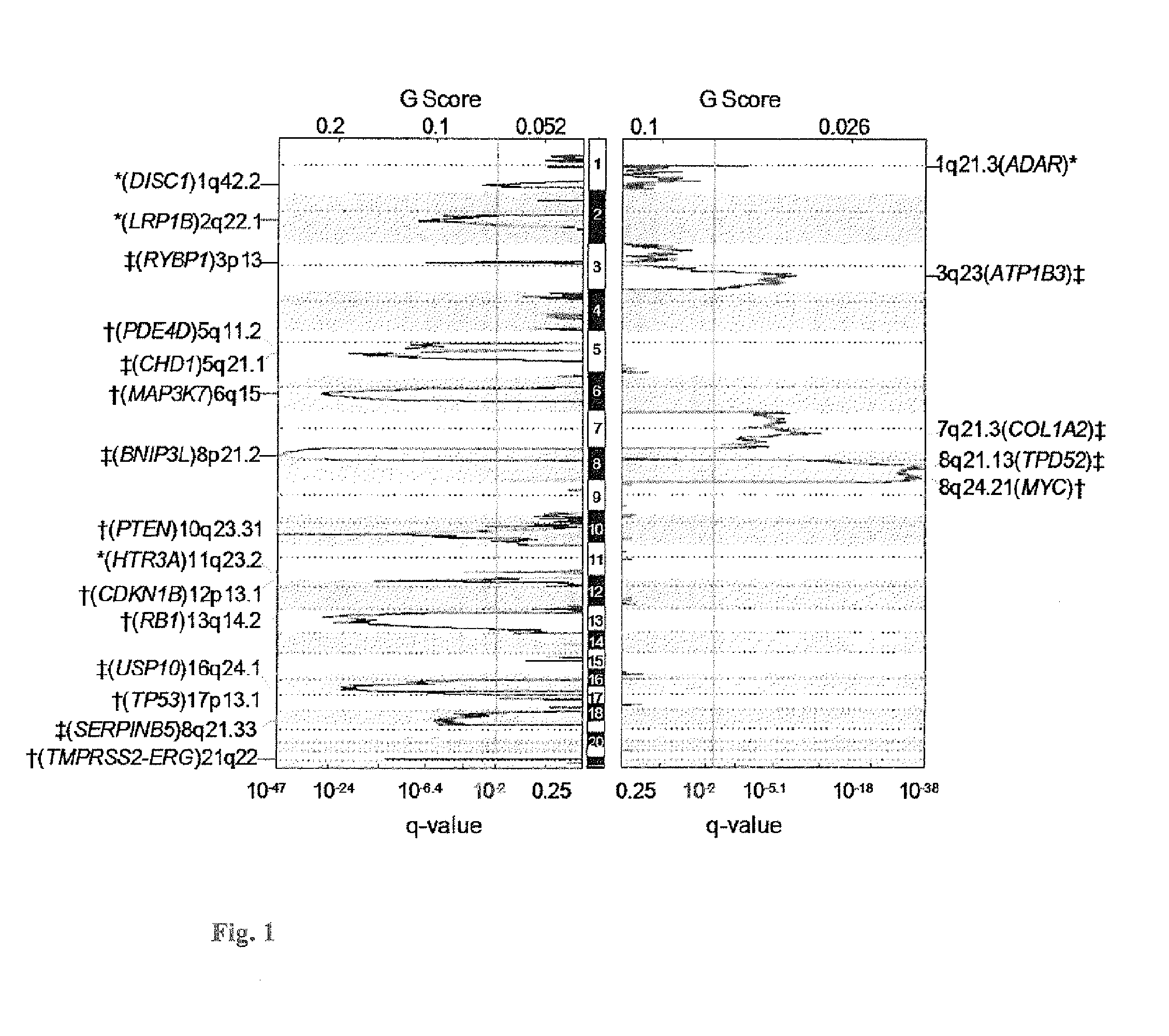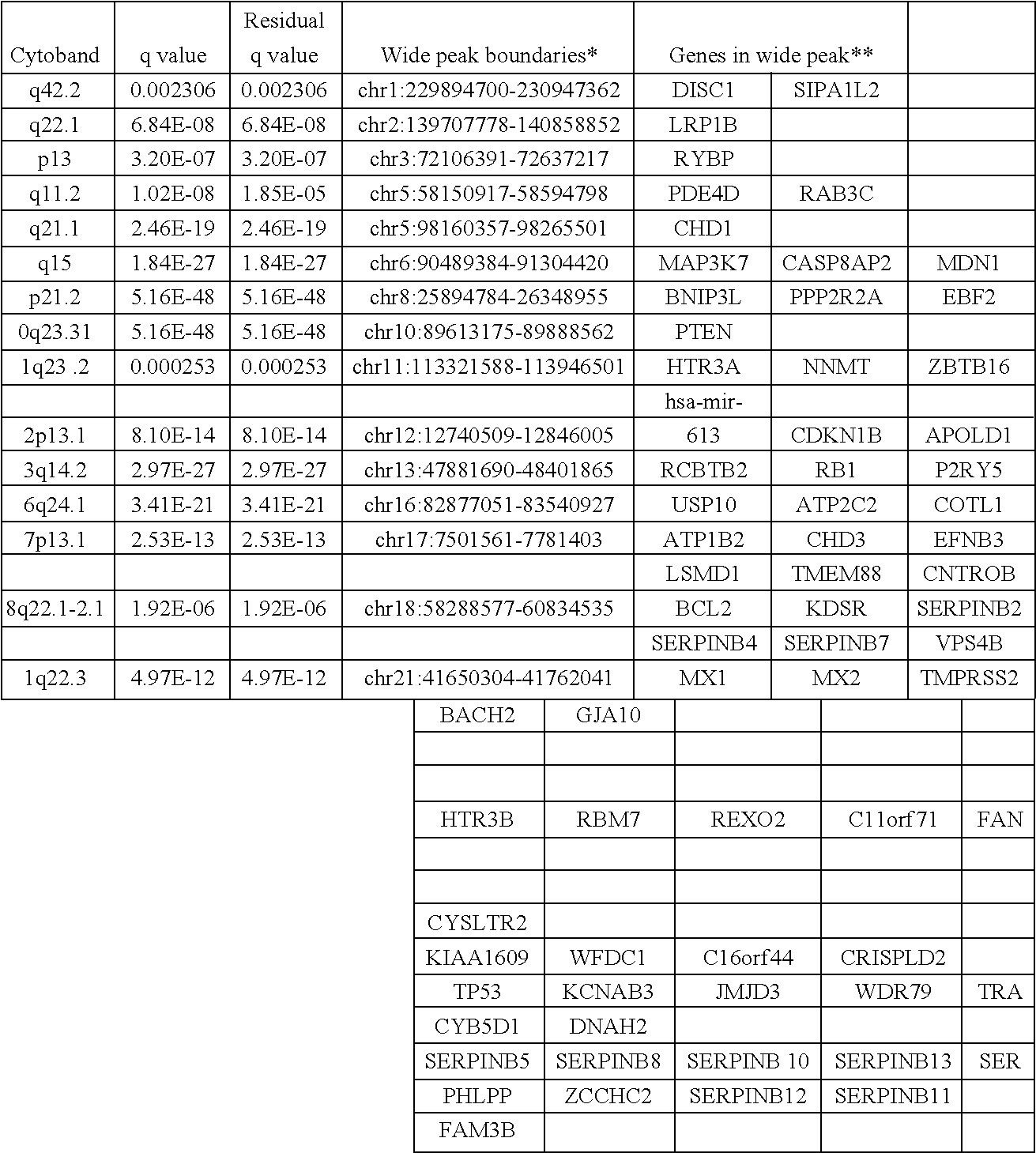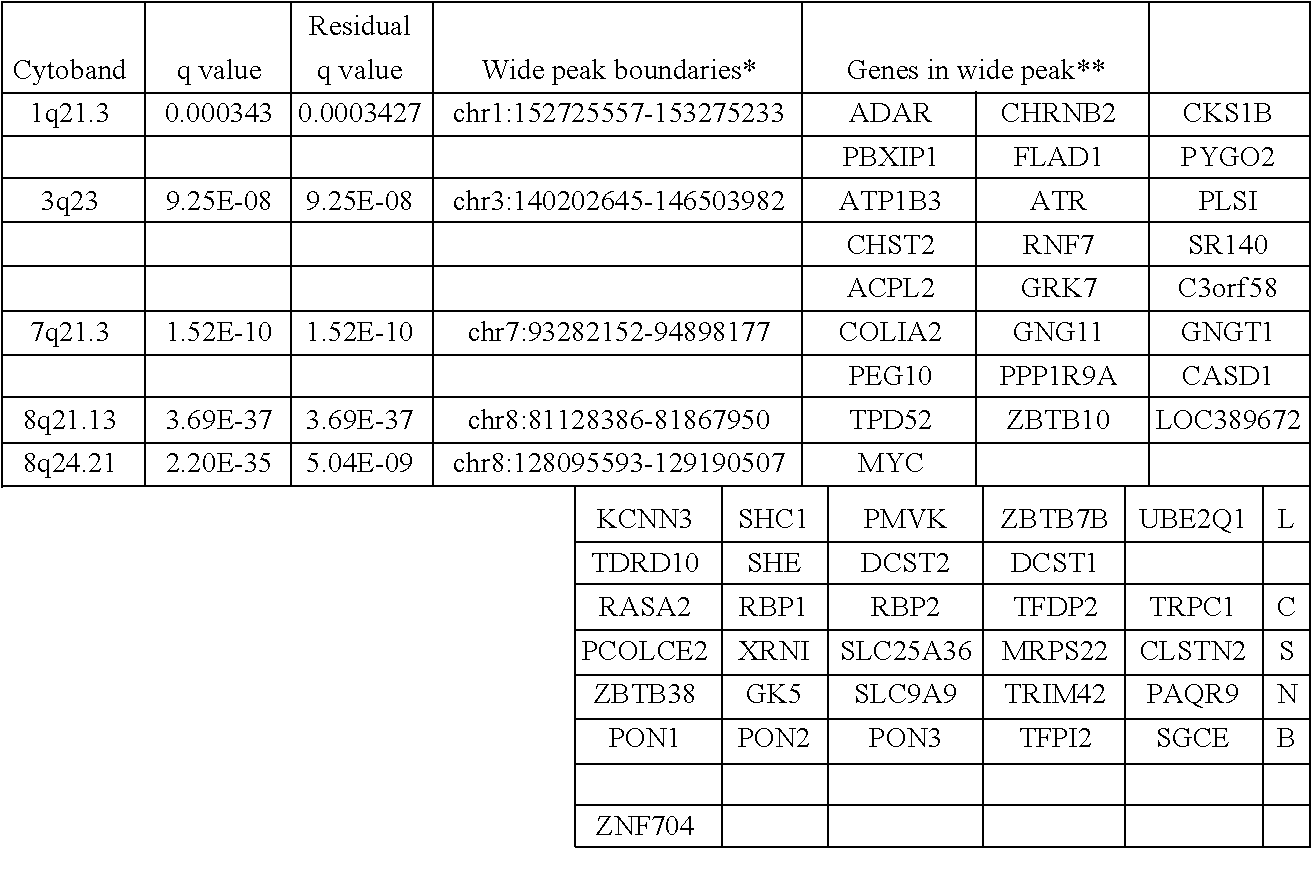Methods and compositions for correlating genetic markers with risk of aggressive prostate cancer
- Summary
- Abstract
- Description
- Claims
- Application Information
AI Technical Summary
Benefits of technology
Problems solved by technology
Method used
Image
Examples
example 1
[0086]Using DNA samples from frozen tumors of 125 patients treated by radical prostatectomy with a median follow-up of ˜seven years from Johns Hopkins Hospital (JHH) in the US and the algorithm of Genomic Identification of Significant Targets in Cancer (GISTIC), seven copy number alterations (CNAs) were identified that were significantly associated with early PCa-specific mortality. These include gains of chromosomal regions that contain the genes MYC, ADAR, or TPD52 and losses of sequences that incorporate SERPINB5, USP10, PTEN, or TP53. Furthermore, multivariate analysis revealed that deletion of the gene PTEN and amplification of the gene MYC contributed additional prognostic information independent of that provided by traditional clinicopathologic measurements, such as pathologic stage, Gleason score, and initial PSA level. Finally, 69 genomic regions in which CNAs were not or rarely observed in the tumor cells were defined using DNA copy number data from 5 different PCa cohorts...
example 2
Genome-Wide Analysis of Prostate Tumors Reveals Genetic Markers Associated with Early Cancer-Specific Mortality Following Prostatectomy
[0133]Abstract.
[0134]Most prostate cancers are considered to be indolent (non-aggressive) and may not even require treatment. However, some of them are aggressive tumors that are characterized by uncontrolled cell proliferation resulting in cancer progression, recurrence and metastases, leading to ˜28,000 estimated deaths in 2012. Clinicopathologic parameters are strong predictors of disease recurrence, but there is no reliable marker to distinguish between those patients within each subgroup who are at high or low risk for prostate cancer specific mortality. To identify novel effectors and markers of localized but potentially life-threatening prostate cancer, DNA copy number alterations (CNAs) and nucleotide mutations were evaluated in the tumor genomes from patients who underwent prostatectomy using high resolution SNP arrays and exome sequencing, ...
PUM
| Property | Measurement | Unit |
|---|---|---|
| Fluorescence | aaaaa | aaaaa |
Abstract
Description
Claims
Application Information
 Login to View More
Login to View More - R&D
- Intellectual Property
- Life Sciences
- Materials
- Tech Scout
- Unparalleled Data Quality
- Higher Quality Content
- 60% Fewer Hallucinations
Browse by: Latest US Patents, China's latest patents, Technical Efficacy Thesaurus, Application Domain, Technology Topic, Popular Technical Reports.
© 2025 PatSnap. All rights reserved.Legal|Privacy policy|Modern Slavery Act Transparency Statement|Sitemap|About US| Contact US: help@patsnap.com



